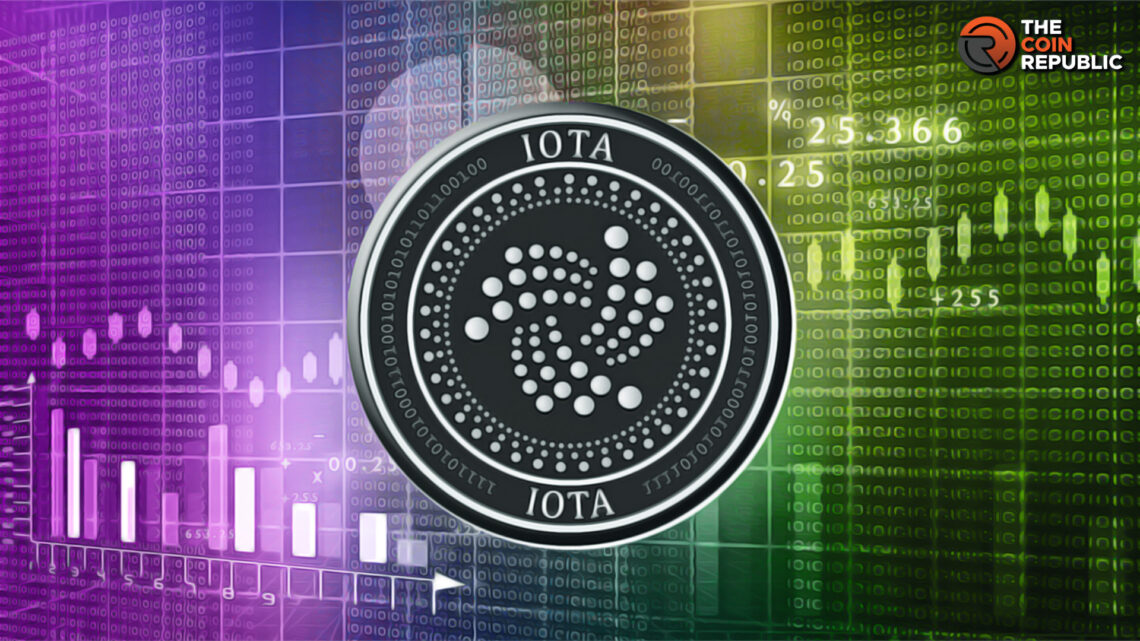- 1 IOTA is a unique ledger-based network specifically built for the Internet of Things.
- 2 While the network claimed to resolve many issues, it also faced criticism for many structural frailties.
- 3 The non-profit organization has worked on its weak points and established a place for itself.
Since the very advent of Bitcoin, Blockchain’s vastness and adaptability captured everyone’s attention. The distributed ledger showed its capacity to be used for different purposes and industries. More importantly, its ability to get accustomed to other technologies became a highlight. And it didn’t take very long for the developers to expand the technology. As a result, the crypto space saw an industry-specific blockchain called “IOTA”.
Understanding The Nitty-Gritty of IOTA
IOTA is an open-source distributed ledger created specifically for the Internet of Things (IoT). For the uninformed, IoT is a technology that connects different devices and makes their interoperability possible. So if your television and car are connected through IoT, you can start the vehicle using the TV remote.
The distributed ledger records and executes transactions among devices connected over an IoT network. Using its native token MIOTA, the mechanism maintains all the transactions. But the token isn’t the key factor that makes this ecosystem innovative. It’s Tangle, a system of nodes that streamlines the whole thing. As per IOTA, Tangle is more efficient and faster than many other blockchains.
Moreover, it has amped up the performance of the core technology. Consequently, the innovation ledger-based solution gained attention from some industry leaders. IOTA has partnered with companies like Bosch and Volkswagen to extend its platform’s support. Notably, it is a non-profit organization that began as a hardware project. Its motto was to design low-cost general-purpose processors while solving scalability and performance issues.
A Peep Into IOTA Mechanism
Using a system of nodes, IOTA makes the technology more efficient. The project intends to become the default means of conducting transactions on devices. Its founders refer to the ledger as a “public permission-less system.” The comprehensive structure enhances interoperability among different devices. It establishes a network between the connected devices and makes it accessible to everyone.
The project claims to solve many problems that have existed on standard blockchains for a long time. Those include scalability, low network speeds, and centralization of mining to a specific group. Among them, scalability has been a big issue that worsens with the increasing number of transactions. And while IOTA resolved those issues, the method it deployed, drew flak from the crypto community.
Well, all the problems in the blockchain arise due to a backlog of transactions. Furthermore, there are a host of reasons responsible for this backlog. It ranges from the difficulty of puzzles miners face to the small block sizes. IOTA addresses these issues by altering the blockchain architecture. It uses Tangle, a unique system that organizes and confirms transactions in a very different manner.
Criticism of IOTA
The fact that IOTA doesn’t work on a typical blockchain makes it susceptible to many. In addition, Tangle isn’t foolproof by design. It is vulnerable to hacking and has scaling problems. According to some experts, its structure is unproven and full of technical flaws. The network faced a loss of $3.94 Million due to a phishing attack. As a result, its developers rewrote the network from scratch and called the update Chrysalis.
Vitalik Buterin, the co-founder of Ethereum expressed doubts over the ability of its hashgraphs. He said that the underlying structure isn’t stout enough to solve scalability issues. Meanwhile, IOTA kept making changes in its structure. In 2021, it implemented another two-stage network update Coordicide. Currently, it deploys several honest actors to prevent network attacks. More than that, it works with a coordinator that makes IOTA a centralized network.
Future of IOTA
The network faced tough times during 2017. However, the implementation of new measures improved the figures significantly by late 2020. By Sep 2021, IOTA’s market cap was approximately $3.2 Billion. The project’s continued collaboration with big corporations has produced results in its favor. Moreover, as long as the network is doing well without any security lapses, its future seems bright to everyone.

Andrew is a blockchain developer who developed his interest in cryptocurrencies while pursuing his post-graduation major in blockchain development. He is a keen observer of details and shares his passion for writing, along with coding. His backend knowledge about blockchain helps him give a unique perspective to his writing skills, and a reliable craft at explaining the concepts such as blockchain programming, languages and token minting. He also frequently shares technical details and performance indicators of ICOs and IDOs.


 Home
Home News
News









